Snowflake Tinker Tray
Snowflake Tinker Tray
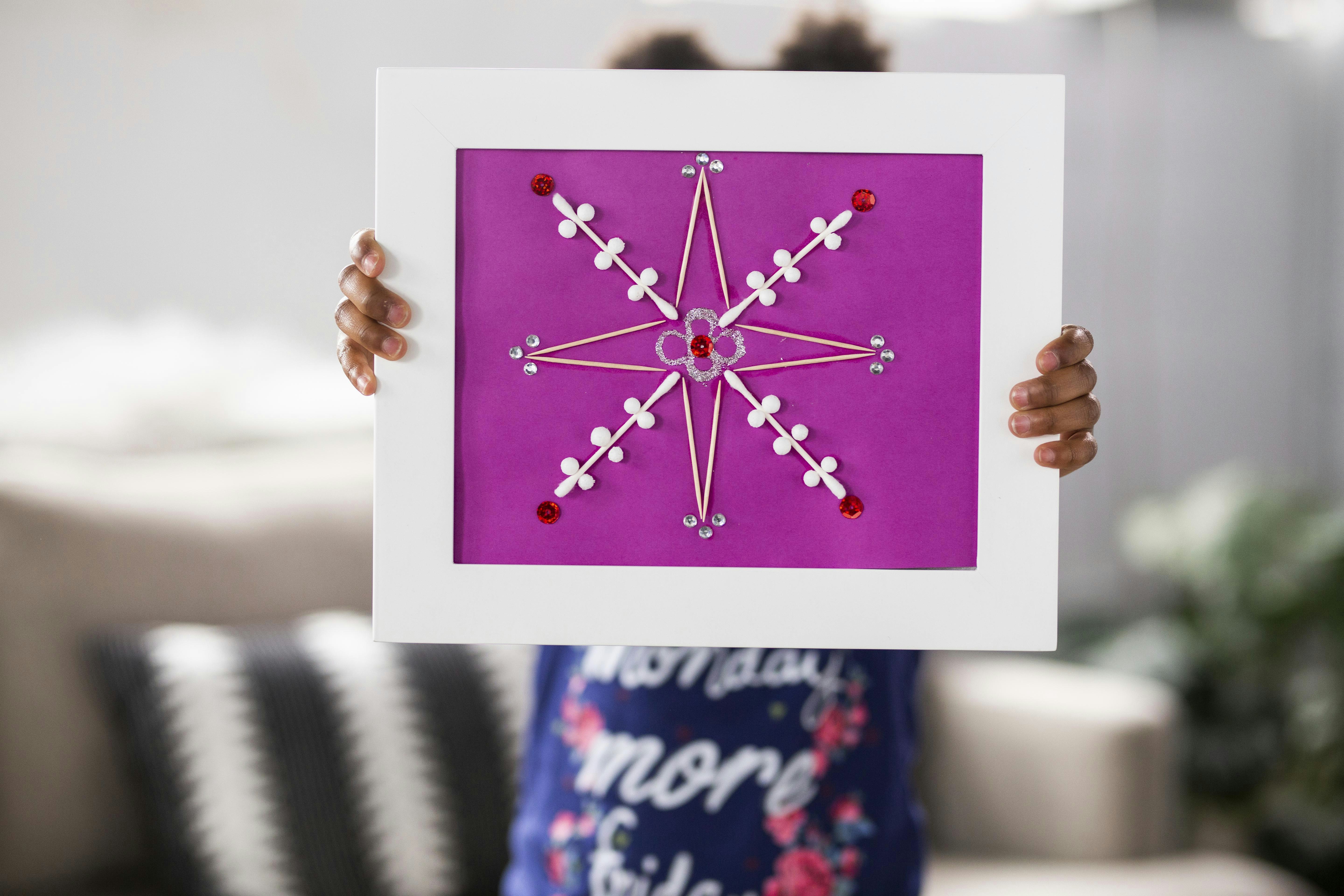
STEAM Subject(s): Art
Supplies:
- Construction paper
- Elmer’s White School Glue (Get creative! Use glitter glue, coloured glue, glow-in-the-dark glue, or metallic glue. Any Elmer’s School or Craft Glue should work.)
- Muffin tin
- Various craft supplies for snowflakes (Just see what you can find at home!)
- Glitter pipe cleaners
- Pom-poms
- Sequins
- Buttons
- Glitter
- Cotton buds
- Toothpicks
Instructions:
- Start by creating a tinker tray. Fill the muffin tin with glitter, sequins, buttons, beads, cotton balls, or whatever other decorating supplies you have to hand. The more shine and sparkle, the better!
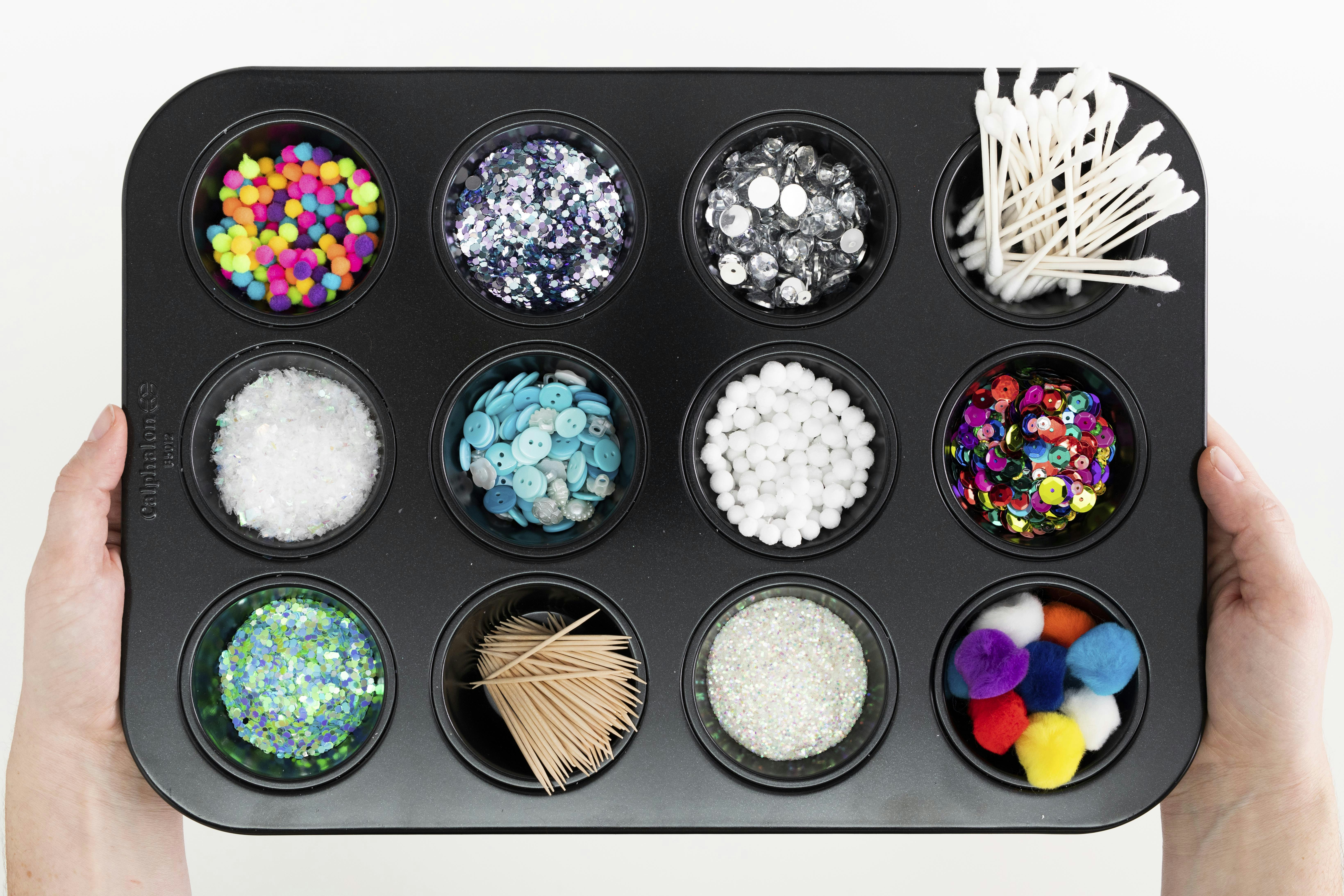
- Using Elmer’s White School Glue, draw a snowflake on the paper. Remember that snowflakes are symmetrical, which means that if you folded a snowflake in half, the two sides would be exactly the same. To make your snowflake symmetrical, every time you add a line, curve, or shape on one side of your page, make sure to add the same line, curve, or shape to the other side.
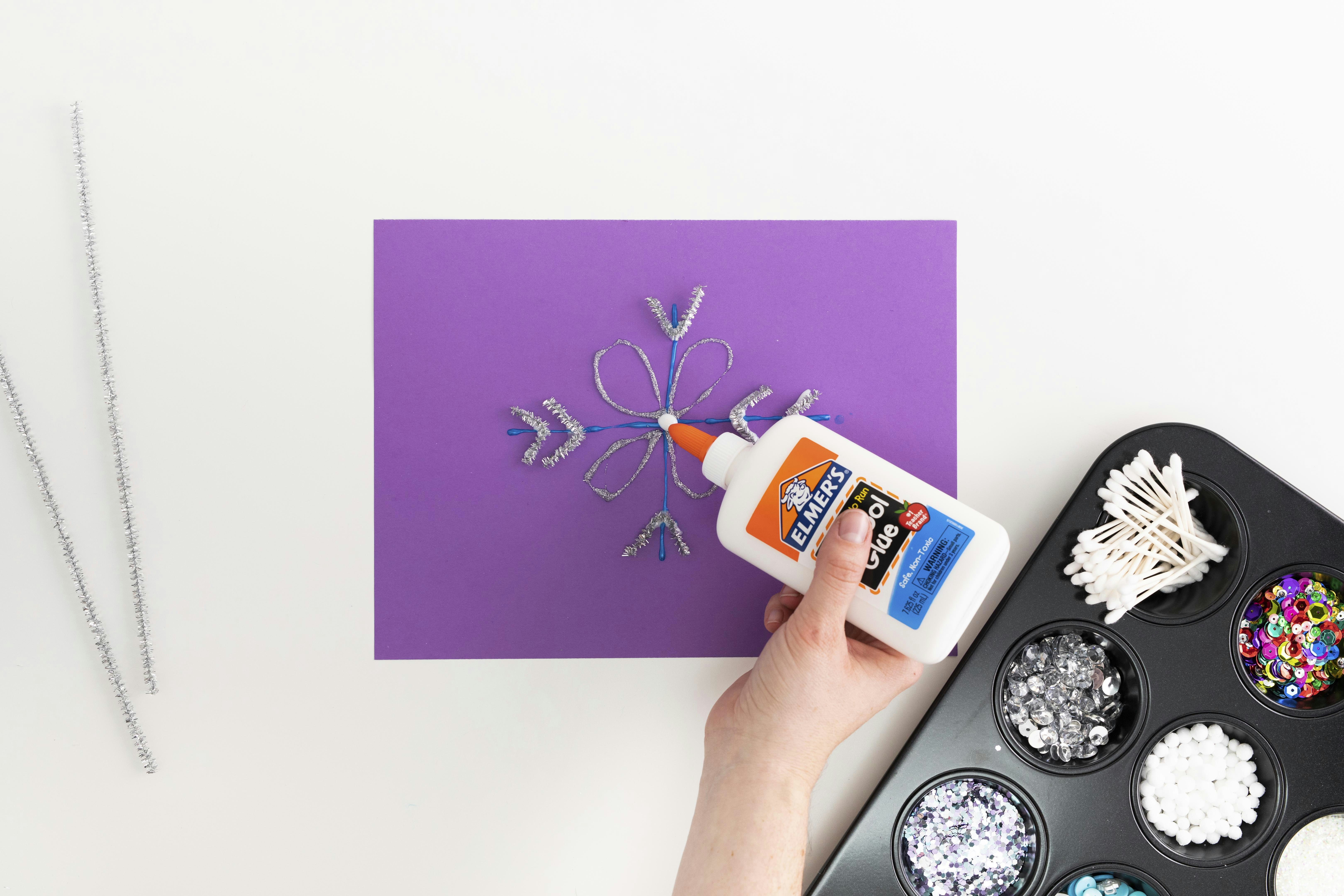
- Use the decorations in your tinker tray to decorate your snowflake, using more glue as needed to make sure all of your decorations stick.
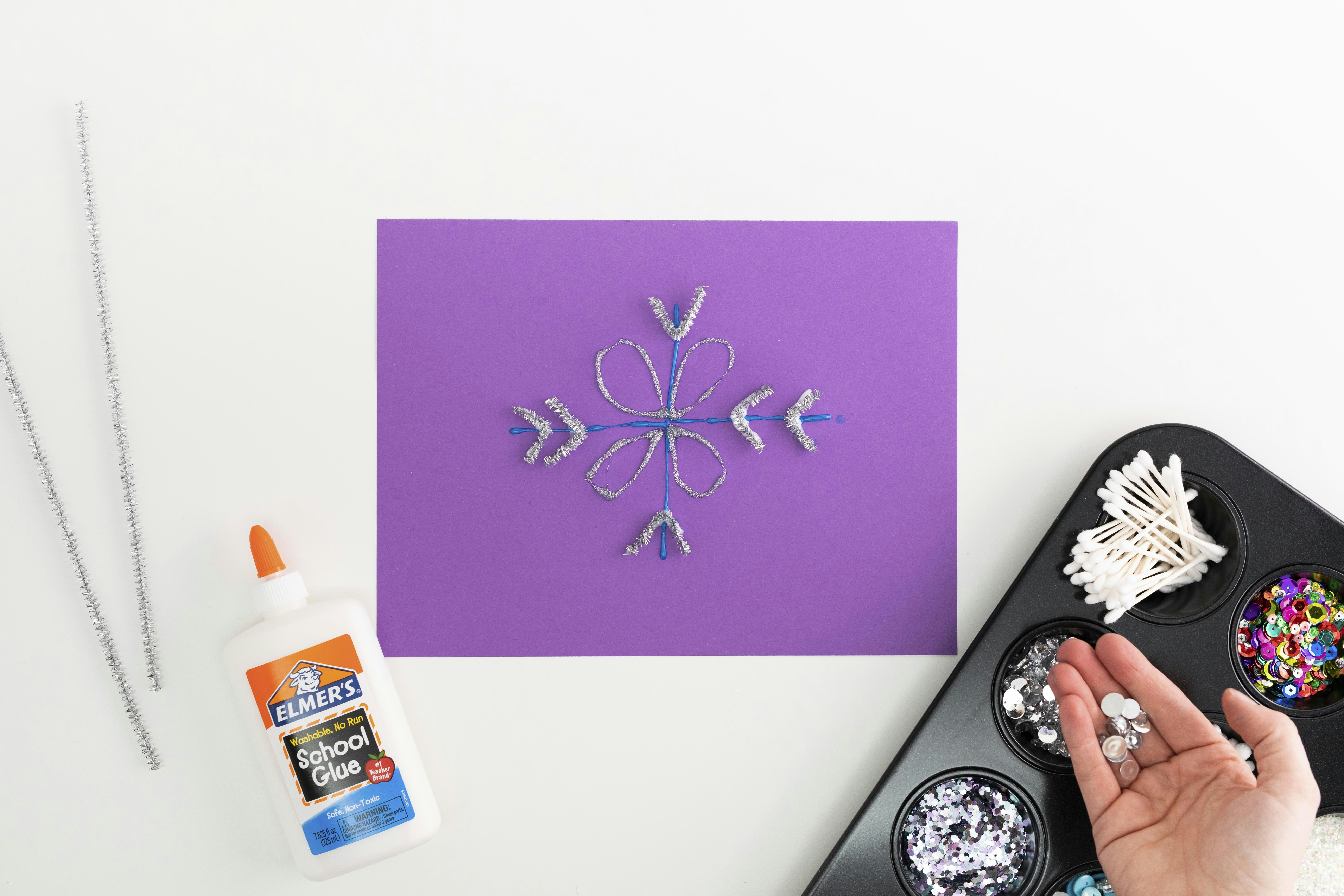
- Let the glue dry and then display your creation for all to see!
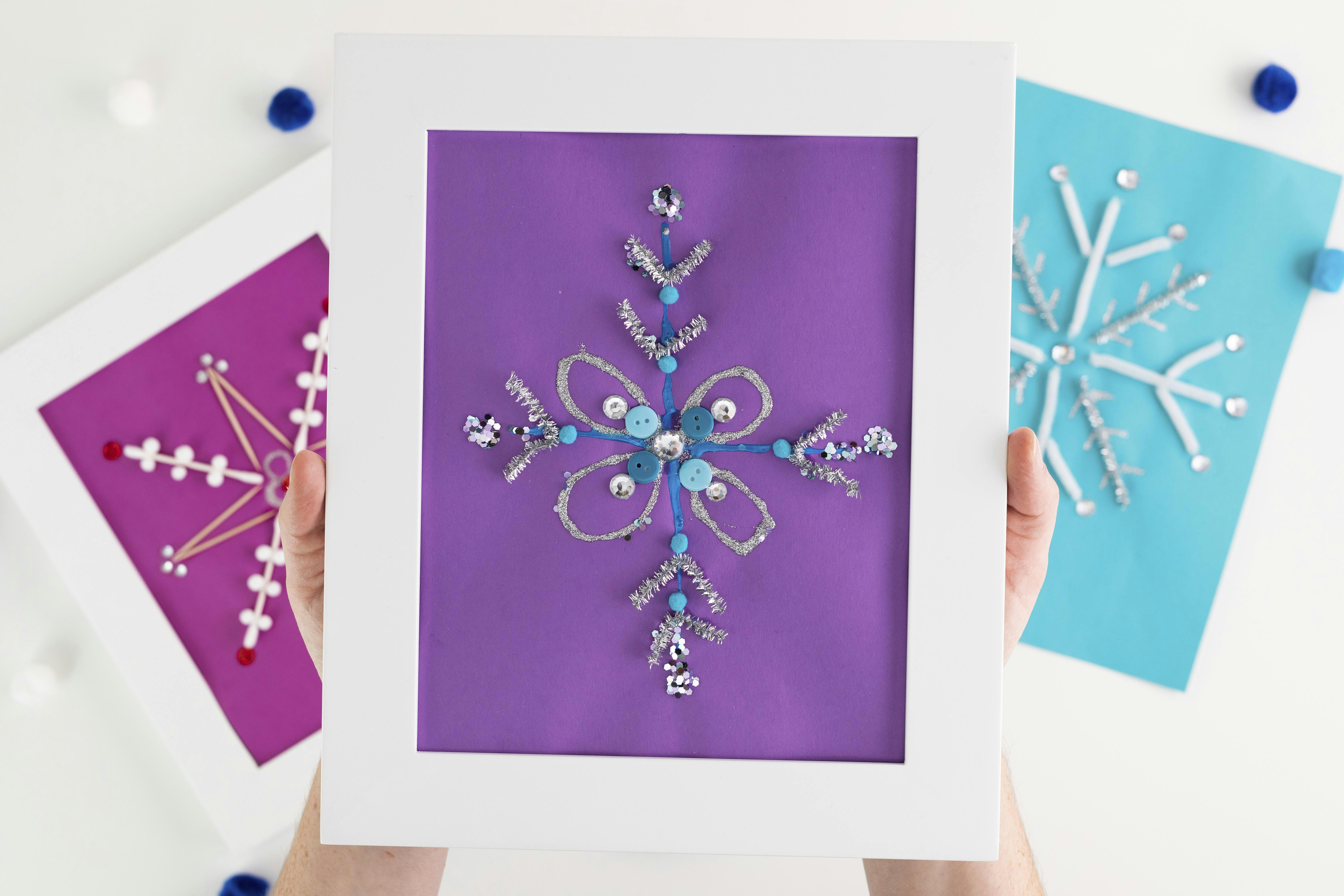
Learn More – STEAM Extensions:
- Did you know that the same matter can look totally different if it is in a different state? Almost everything around us is in a solid state, a liquid state, or a gas state. We’re sure you already know that snow is just frozen (or solid) water. When you poured the glue out of the bottle to make your snowflake, what state was it in? It was in a liquid state. But then exposure to air caused the glue to turn into a solid state. Can you look around your house and find five things that are in a solid state? What about in a liquid state? What about in a gas state?
- Snowflakes are amazing! Snowflakes are created when water vapour in the atmosphere forms into ice crystals. These ice crystals attach to small particles of dirt and over time form into a six-sided snowflake that is perfectly symmetrical. If you folded a snowflake in half, each side would be an exact replica of the other. Not even careful human hands can replicate this symmetry. Try taking a picture of one of the snowflakes that you made. Print out your picture and fold it in half. Is it perfectly symmetrical? It probably isn’t because the human hand isn’t quite as exact as nature can be! How close were you able to get?
- Every flake is unique. Another amazing thing about snowflakes is that each snowflake is unique. Think of a park covered in freshly fallen snow. It’s hard to imagine that every single flake follows a different pattern and has a unique design. Now challenge yourself to create unique snowflakes. Using your tinker tray, can you make five that are completely unique? What about ten?
- Have you ever wondered why sometimes snow is light and fluffy, and then at other times it’s heavy and wet? It’s all about the temperature outside. When the weather is a little warmer, the ice crystals tend to melt together, making heavier, wetter snow. When it’s really, really cold, the snow is light, fluffy, and perfectly crystallised.
Level Up – Options for Older Kids:
- Be a meteorologist. For one week, make observations about the weather. Create a data table to record the temperature and various conditions (sunny, cloudy, rainy, snowy, windy, humid, dry). Make a prediction about what the weather will be like on the eighth day, based on your observations. Then see if your prediction matches the weather.
- Snowflakes aren’t the only thing in nature that is symmetrical! In fact, there are many things in nature that are symmetrical. Can you go outside and see if you can find something symmetrical? What other patterns can you find in nature?
Standards Alignment:
Common Core Maths Standards
- CCSS.MATHS.CONTENT.4.G.A.3: Recognise a line of symmetry for a two-dimensional figure as a line across the figure such that the figure can be folded along the line into matching parts. Identify line-symmetric figures and draw lines of symmetry.
Next Generation Science Standards
- K-ESS2-1: Use and share observations of local weather conditions to describe patterns over time.